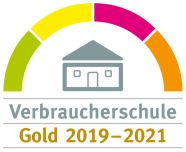Not the Beginning! – “Black Lives Matter” and Martin Luther King
The “Black Lives Matter” (BLM) movement is one of the largest anti-racist movements of modern times. But it was not the beginning of people’s fight against racism in the United States. Long before that there were many civil rights movements, demonstrations and uprisings against the cruel and racist people of this world. One of the most famous examples is the movement led by Martin Luther King (MLK).
In the context of this semester’s topic “National and cultural identity”, the English Advanced Courses of Ms. Batteux and Ms. Langer of the Carl-Friedrich-von-Siemens-Gymnasium took a closer look at MLK and the city of Selma. For this purpose, the students watched the truth-related movie “Selma” and participated in an online conference with the US-American historian Dr. David Goldfield organized by the British Embassy Berlin.
The two-hour historical drama “Selma” was released in 2014 and is about MLK and his successes and defeats around the city of Selma. It is about the problem with voting rights for black people. Since 1965 black people have been allowed to vote in the US, but they were not able to do so because they had to be registered. However, this was not possible due to enormous racism against black people. MLK stood up to this injustice and decided to resist this endless racism.
Obviously, Selma was not just any US city in Alabama. Known for its extreme racism, even though almost half of the population was not white, the city became popular for its non-violent marches and demonstrations. However, many of them were often violently stopped by the police.
According to Mr. Goldfield the film is historically accurate and interestingly designed. Due to a lot of action, humiliation and information from the records of the secret services about MLK, the film seems really exciting. The deep emotional insights into the characters make Situation and violence as well as the desire for a life in peace become very personal. What is striking is that despite a lot of information has been left out, the film still comes across as detailed. However, it is important to note that every important piece of information and MLK’s negotiation with the politicians is comprehensible in itself.
This opinion is also shared by the historian David Goldfield. In the online conference, which consisted of a short lecture by Goldfield and a one-hour Q&A session, the Berlin students got an even more detailed insight into the events around the city of Selma. Specifically, he talked about the history of Selma, the “Black Lives Matter” movement and the historian’s personal experience at the time of the movement in the 1960s.
Goldfield reported for example that he himself witnessed the “Bloody Sunday” on March 7, 1965. On that day all broadcasts on the television were interrupted to show footage of the violence of the police against black people. Goldfield went on to recount many significant moments of the movement. One of these special moments was MLK’s meeting with other leaders of the Civil Rights Movement on March 6, 1965. Without denying or discounting actions, Goldfield gave a detailed look at the terrorizing racism in the United States.
In the Q&A part many interesting questions were asked by the students. For example, why people say “black” nowadays while in the past they used to say “negro”. This is because the meaning of the words has changed. “Negro” used to be a normal term but it became an insult when it was used increasingly negatively. Today people say “black”, so the other way around. Goldfield mentioned that if you want to say it nicely, you should say “colored” when referring to people of color.
Among the students other questions arose, such as why the 1964 killing of colored girls walking down stairs in the Birmingham, Alabama 16th Street Baptist Church due to a bomb set by the Ku Klux Klan was used as a starting point of the movie. Goldfield was very clear about this. He claimed that on the one hand the producers used this incident to arouse interest in the movie but on the other hand he referred to the meaning behind this attack. He also said that although the protests were peaceful, some things could not be negotiated peacefully back then. The high number of riots attracted more and more attention, which was MLK’s “intention”, as Goldfield called it. After some time, these acts of violence provided the necessary intimidation for the government to finally make it possible for people of color to vote.
The more topical question was what the difference between the MLK movement and the BLM movement was. This question was also very easy for the historian to answer. He claimed that it was mainly the extension to more groups of people and issues that made them different. Particularly noticeable to him was that a lot more white people were interested and engaged in the BLM movement. Additionally, the expansion of issues, from voting rights, jobs and education for people of color to clean air, police brutality, rights and racist behavior in everyday life led to a difference between the two movements.
On the whole, it can be said that through the protests and marches around the city of Selma and under the leadership of MLK, the uprising of the anti-racist movement was greatly encouraged. The acts of violence against people of color did not remain senseless. It is through their sacrifices that fighting for a just and equal world in today’s BLM movement is possible. It is also because of the growing number of participants around the globe that more and more of their aspirations finally become reality.
Finally, based on the historical drama “Selma” and the online conference, it can be said that without Martin Luther King, there probably would not be that mass of people fighting against racial and social injustice today. Unfortunately, by far not all goals have been reached yet. Through active education, like at the Carl-Friedrich-von-Siemens-Gymnasium, there could be less racism in the future. We look forward to seeing more of these projects in the future all around the world.
Lea Nieland (Q2) and Ms. Langer






















